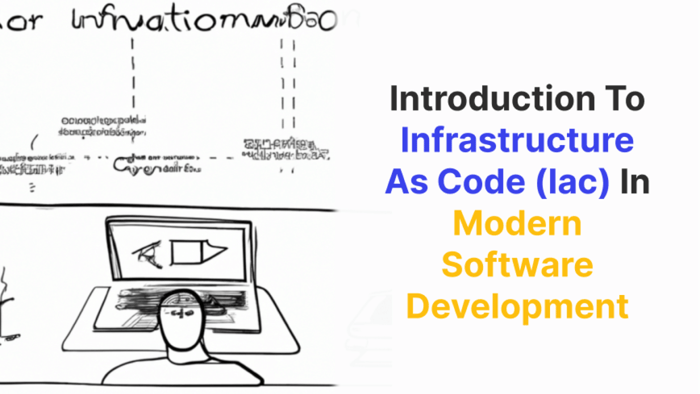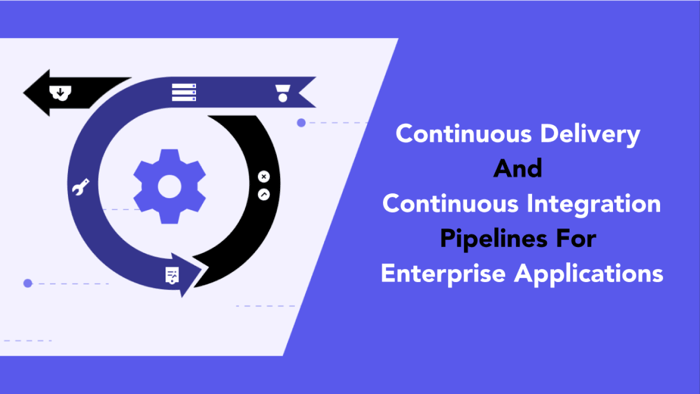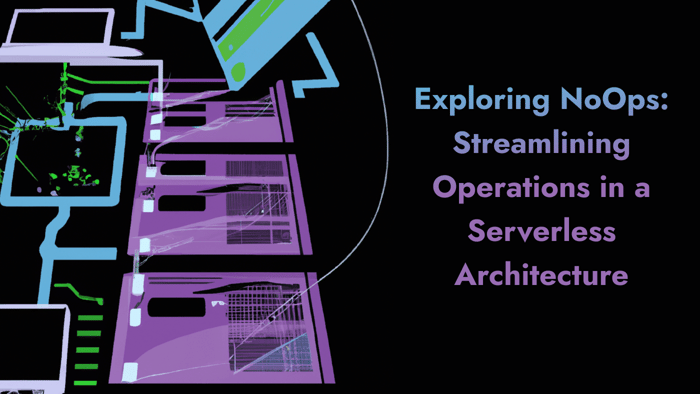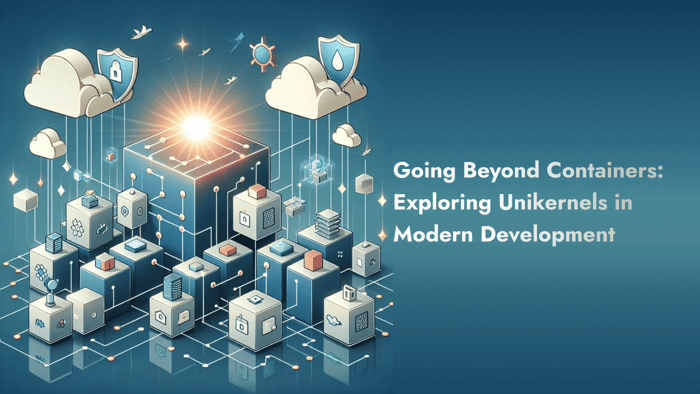Learn about Infrastructure As Code(IAC), and how it can be used in software development.
Infrastructure as Code (IaC) promotes agility, efficiency, and collaboration between development and operations teams. By enabling developers to define and manage infrastructure components using code, IaC brings automation, scalability, and reproducibility to the infrastructure layer. This approach facilitates faster deployment cycles and reduces manual errors, ensuring consistency across various environments.
Embracing IaC practices can significantly benefit entrepreneurs in their software development processes, accelerate time-to-market and minimize operational costs. Instead of getting bogged down with manual infrastructure provisioning and maintenance, they can focus on innovation and delivering value to their customers.
In this article, we will explore the fundamentals of Infrastructure as Code, highlight its significance and how you can successfully implement Infrastructure as Code in your Software development.
Understanding Infrastructure as Code
Infrastructure as Code (IaC) is a software engineering practice that enables entrepreneurs and development teams to manage and provision their IT infrastructure using code-based definitions. It simply means treating the infrastructure setup servers, networks, databases, and other components like they would manage their application code.
Instead of manually configuring and setting up servers and infrastructure elements, IaC allows entrepreneurs to use programming languages or configuration files to define their desired infrastructure state. This code is then executed by automation tools to create, modify, or delete infrastructure resources as needed.
One of the notable concepts in IaC is understanding the difference between immutable and mutable infrastructure.
- Immutable Infrastructure: In this approach, infrastructure resources are treated as immutable, meaning they never change after provisioning. Instead of altering existing resources, new resources are created with each change. To ensure that the infrastructure remains consistent and predictable throughout its lifecycle. For example, when deploying a new version of an application, instead of updating the existing servers, new servers are provisioned with the updated version while the old ones are deactivated. Immutable infrastructure offers benefits such as easier rollback, reproducibility, and scalability.
- Mutable Infrastructure: In contrast to immutable infrastructure, mutable infrastructure allows for in-place updates and modifications to existing resources. Changes can be made directly on running instances or servers without creating new ones. While this approach provides flexibility and allows for quick fixes or modifications, it can lead to configuration drift and inconsistencies over time if mismanaged.
When selecting an Infrastructure as Code (IaC) solution, understanding the differences between a declarative and an imperative approach is crucial. These approaches define how you interact with and describe your desired infrastructure configuration.
- Declarative Approach: In a declarative approach, you specify the desired end-state of your infrastructure without detailing the exact steps needed to achieve it. You declare what you want the infrastructure to look like, and the IaC tool handles the implementation details. Changes to the infrastructure are made by modifying the declaration, and the tool automatically adjusts the existing resources to match the new state. This approach encourages consistency and reduces the risk of configuration drift.
- Imperative Approach: An imperative approach involves explicitly defining the sequence of steps required to create or modify infrastructure components. You provide explicit instructions for how to achieve a particular configuration. While this approach gives you fine-grained control over the process, it can lead to more complex and error-prone scripts. It may also make it harder to track changes and maintain consistency, especially as your infrastructure scales.
Cloud Computing and Virtualization
Cloud Computing refers to the delivery of computing services over the internet, providing on-demand access to a wide range of resources such as servers, storage, databases, software, and networking. Instead of owning and managing physical infrastructure, entrepreneurs can utilize cloud computing to access these resources through a service provider's data centres.
Virtualization is a technology that allows entrepreneurs to create multiple virtual instances of physical resources, such as servers, storage devices, or operating systems, within a single physical hardware system. It effectively enables one physical resource to function as multiple virtual resources.
Virtualization Technologies and Their Relation to IaC
Virtualization technologies, like hypervisors and containers, are closely tied to Infrastructure as Code. They provide the foundation for creating isolated and reproducible environments managed easily through code.
Hypervisor-based virtualization allows multiple virtual machines (VMs) to run on a single physical server, each with its own operating system and resources. It enables developers to create isolated environments for testing different configurations without impacting other parts of the infrastructure.
Containers take virtualization a step further by providing lightweight and portable runtime environments. With tools like Docker, developers can define the entire runtime environment, including the operating system dependencies, libraries, and application code in a single container image. These containers can be deployed consistently across different environments, making it easier to achieve reproducibility.
Implementing Infrastructure as Code in DevOps
DevOps is a set of practices that emphasizes collaboration between development and operations teams. The goal is to facilitate a seamless and continuous delivery pipeline where new features and updates are released quickly and reliably. Traditionally, operations teams were responsible for manually setting up and managing infrastructure, which often caused delays and communication gaps.
IaC makes it possible to automate these practices such that they do not require manual efforts. Let’s discuss some aspects of DevOps that can be automated using IaC.
Ensuring DevOps Quality Assurance
Quality Assurance (QA) is a fundamental aspect of the DevOps process. It ensures the deployed infrastructure is reliable, secure, and meets the desired specifications. By implementing QA practices in your IaC workflows, you can minimize errors, reduce downtime, and improve the overall quality of your software delivery.
Automated testing plays a major role in ensuring DevOps Quality Assurance. With IaC, you can define tests as code and integrate them into your CI/CD pipeline. It allows you to automatically validate your infrastructure changes before deploying them to production. Terraform built-in testing frameworks or specialized testing frameworks like InSpec or Selenium are examples of tools used to verify that your infrastructure code functions as intended.
Infrastructure validation is another crucial aspect of DevOps Quality Assurance. It involves checking your infrastructure code to ensure it adheres to best practices, security standards, and compliance requirements. Tools like TFLint or Checkov can help identify potential misconfigurations or security vulnerabilities early in the development cycle. Integrating these validation checks into your CI/CD pipeline would aid you in catching issues before they reach production.
Monitoring and Observability in a CI/CD Pipeline
Monitoring and observability are essential for maintaining the health and performance of your deployments. In a CI/CD pipeline context, monitoring allows you to track the state of your infrastructure and detect potential issues during the deployment process. While observability provides insights into the internal workings of your infrastructure, allowing you to troubleshoot and optimize performance.
Integrating monitoring tools like Prometheus, Grafana, or Datadog into your CI/CD pipeline allows you to collect metrics and visualize the health of your infrastructure. By setting up automated alerts and notifications, you can proactively respond to any anomalies or failures that occur during the deployment process.
Observability is enhanced by leveraging centralized logging and distributed tracing. Tools like Elasticsearch, Fluentd, and Kibana (EFK stack) or Jaeger can help collect, store, and analyze logs and traces from your infrastructure components. It enables you to gain visibility into the behavior of your infrastructure at a granular level, making it easier to identify bottlenecks or performance issues.
Tooling for Infrastructure as Code
Infrastructure as Code (IaC) tools enable the automation and management of infrastructure configurations using code. They provide a way to define, provision, and manage infrastructure resources in a consistent, repeatable, and version-controlled manner. Here are the most commonly used tools:
- Pulumi: Pulumi is a modern IaC platform that allows you to use familiar programming languages (such as Python, JavaScript, Go, and others) to define and manage infrastructure resources. Pulumi treats infrastructure as software, enabling developers to leverage their coding skills to provision and manage resources across various cloud providers. It focuses on creating a bridge between traditional infrastructure provisioning and modern application development.
- Terraform: Terraform is one of the most popular declarative IaC tools. It uses HashiCorp Configuration Language (HCL) to define infrastructure as code. Terraform supports multiple cloud providers, services, and resources. It allows you to declare the desired state of your infrastructure and automatically manages the lifecycle of resources, ensuring they match the declared state. It also provides a robust ecosystem of modules and plugins.
- Ansible: Ansible takes an imperative approach to configuration management and automation. While often associated with configuration management, it can also be used for provisioning infrastructure. Ansible uses YAML-based playbooks to define tasks and configuration steps that need to be executed on remote servers. It's agentless, meaning it doesn't require any software to be installed on target machines. Ansible is known for its simplicity and ease of use, making it accessible to both operations and development teams.
- Puppet: Puppet is primarily known as a configuration management tool, but it also has capabilities for managing infrastructure. Puppet uses a declarative language to define how systems should be configured. It maintains a desired state for systems and ensures that they adhere to that state over time. Puppet's focus is on maintaining consistency across a fleet of servers by defining configurations for software, users, services, and more.
Each of these IaC tools offers different strengths and trade-offs. The choice of tool depends on factors like your team's skills, project requirements, and the complexity of your infrastructure.
Best Practices for Infrastructure as Code
As an entrepreneur looking to adopt Infrastructure as Code (IaC) practices, understanding the best practices can greatly benefit your software development processes. Here are some notable guidelines to follow:
Organizing code repositories and project structure
Organizing your code repositories and project structure is crucial for maintaining a clean and manageable IaC setup. Here are some tips to consider:
- Modularize your code: Break down your infrastructure code into reusable modules to promote reusability and maintainability.
- Follow a consistent naming convention: Use a naming convention that identifies the purpose and components of your infrastructure resources.
- Separate environments: Maintain separate directories or repositories for different environments (e.g., development, staging, production) to ensure isolation and avoid accidental changes.
Version control and collaboration using Git
Version control is essential for managing changes in your infrastructure codebase. Git is a popular version control system that enables collaboration among team members. Consider the following practices:
- Use branches: Create feature branches to work on specific changes or experiments, promoting parallel development without impacting the main codebase.
- Commit frequently: Make small, incremental commits with descriptive messages to track changes accurately.
- Leverage pull requests: Utilize pull requests to review and discuss code changes before merging them into the main branch, ensuring quality control.
Using configuration management tools
Configuration management tools like Terraform and Ansible provide powerful capabilities for managing infrastructure resources. You can make the most of these tools by:
- Leveraging infrastructure as code: Use Terraform's declarative language or Ansible's playbook format to define your desired infrastructure state.
- Implementing idempotency: Ensure your infrastructure code can be applied multiple times without causing inconsistencies or conflicts.
- Utilizing modules and roles: Take advantage of modules in Terraform and roles in Ansible to encapsulate reusable logic and simplify your codebase.
Agile software development lifecycle
Integrating IaC into an agile software development lifecycle enables rapid iterations and continuous delivery. Consider the following practices:
- Collaborative planning: Involve infrastructure engineers early in the planning process to align infrastructure requirements with product goals.
- Continuous integration and delivery (CI/CD): Automate the testing, building, and deployment of infrastructure changes as part of your CI/CD pipeline.
- Infrastructure testing: Develop automated tests that validate your infrastructure code to catch issues early and ensure reliability.
Conclusion
In conclusion, embracing Infrastructure as Code (IaC) in modern software development empowers entrepreneurs and developers to drive efficiency, reliability, and agility. By treating infrastructure like code, teams can achieve automation, scalability, and reproducibility, leading to faster deployment cycles and reduced errors.
The focal point of IaC becomes evident in its impact on DevOps practices and the adoption of cloud computing and virtualization technologies. From ensuring quality assurance through automated testing and validation to enhancing monitoring and observability, IaC flawlessly integrates with the agile software development lifecycle.
Best practices like organizing code repositories, version control, leveraging configuration management tools and employing Agile methodologies ensure a robust and successful implementation of IaC. With these strategies, entrepreneurs can focus on innovation, minimize operational complexities, and ultimately deliver quality solutions to customers.
Akava would love to help your organization adapt, evolve and innovate your modernization initiatives. If you’re looking to discuss, strategize or implement any of these processes, reach out to [email protected] and reference this post.





